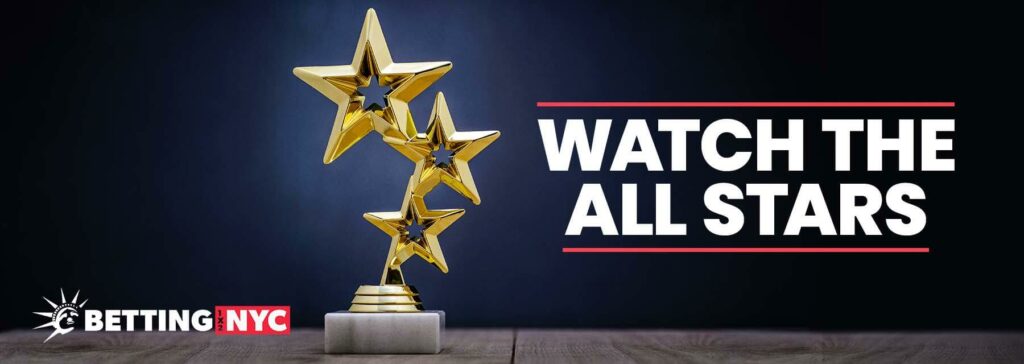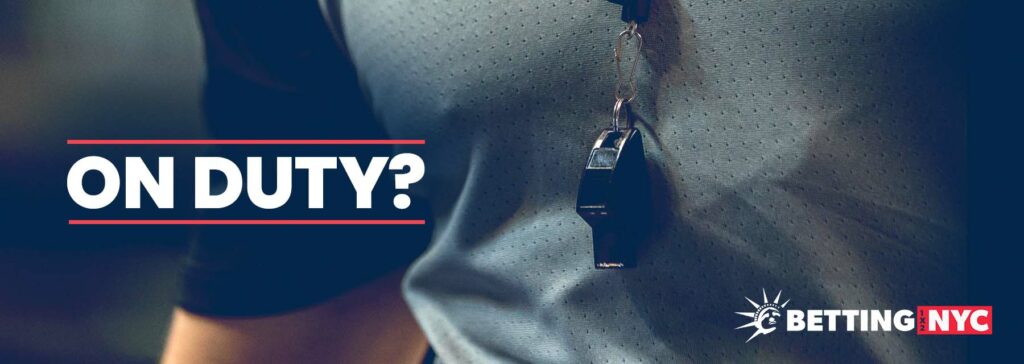The Importance of Understanding NBA Rules
Some punters may not feel that learning the key NBA rules will help their betting, but our team and readers know differently.
Understanding how things work across the regular season to the NBA playoff rules and betting on the Finals can help you tenfold.
Combine this knowledge with our wise words on how to read NBA odds and the history surrounding the NBA teams, and you might just start finding your profits grow.
“Nothing can help you find more winning NBA bets than in-depth knowledge and experience.”
NBA – Game Objective
Two teams, A and B, each attempt to score points in the opposite basket. Team B will gain possession if Team A successfully scores a point(s).
If Team A’s initial attempt to score fails (from a missed shot or a turnover), the ball will be in the control of Team B.
Court Size, Scoring & Roles

As per NBA rules, the court’s inner dimensions should be 94 feet in length and 50 feet in width. You can find a center circle where the action kicks off.
Two “baskets” are set up on opposite ends of the court, with free-throw lines located 15 feet away.
How to Score
- 1 Point – A successful free throw awards the team one point. Technical fouls, personal fouls committed while a player is shooting, and fouls committed when a player’s team is in the bonus all result in free throws.
- 2 Points – Any basket made by an NBA player within the 3-point line is worth 2 points. A player receives two free throw attempts if they are fouled while attempting a 2-point shot.
- 3 Points – Any shot made by an NBA player outside the 3-point line results in 3 points. The 3-point line is 22 feet from the hoop in either corner of the floor and 23.75 feet from the basket at its farthest position.
NBA Team Player Roles
The point guard, shooting guard, small forward, power forward, and center are the five primary positions in the NBA.
Positional flexibility is crucial in today’s game, and the majority of players play varying minutes at numerous places on the court:
- Center
- Small Forward
- Power Forward
- Point Guard
- Shooting Guard
NBA Gameplay Fouls & Stoppages
The NBA rules state that players can commit two types of fouls, technical and personal. Technical fouls are set out by the rules of the game, including excessive timeouts, too many players on the court, and unsportsmanlike behavior.
There is a lot more depth to the personal fouls. This includes the fact that any player clocking up six during a game will be removed from the court.
Teams are allowed four personal fouls per quarter, with free throws awarded to the other team for every foul beyond four.
Game Time, NBA Play In Rules & Playoffs Explained
The NBA season is a long and winding road for all teams, with various key stages along the way. We will explain each one in turn, but let’s clarify the game time details you need to know.
NBA Rules – Game Time
A standard basketball game in the NBA lasts 48 minutes, divided into four 12-minute quarters with a 24-second shot clock.
Each NBA team begins with five players. The referee throws the ball between the two tallest players on the court, generally the centers. A player tips the ball to a teammate to begin the game.
Teams have 24 seconds to either make a basket or make contact with the rim whenever they have the ball.
NBA Play In Tournament Rules
The NBA in play tournament was introduced to improve the competitive nature across the league. The idea is to give any of the top ten teams from each conference the chance to advance to the playoffs.
Each Conference’s 7-10 seeds take on each other to determine the 7th and 8th playoff seeds. The main gameplay rule for this phase of the NBA season is that these games are one-offs and not a seven-series setup.
“Ultimately, more teams will strive to do the best they can at the end of the regular season due to the chance of making the in play tournament.”
NBA Playoff Rules
The playoffs are the culmination of the regular NBA season. Once the four seeds are settled via the NBA play in tournament rules mentioned above, the playoffs begin.
With 16 teams in total and seeding based on their regular season records, each playoff round becomes a seven-game series:
- First Round
- Conference Semis
- Conference Finals
- NBA Finals
NBA All Star Rules

The NBA All Star rules have a slightly different setup to the regular season games. Both teams play out the first three quarters starting at 0-0, with each win awarded to the charities involved.
The final quarter is then untimed, with a final score target set for both teams.
Final Target Score Rules
- The leading team’s total cumulative score from the first three quarters will be combined and then increased by 24 points to achieve the Final Target Score for both teams.
- The Final Target Score includes 24 points as a continuing honor to the late Kobe Bryant, who spent the final ten years of his career wearing the number 24 jersey.
NBA Rules for Players & Coaches
All players must follow strict playing rules throughout the game, split into offense and defense. Then there is a general all-player set of NBA rules to follow:
Offense
- Bouncing or dribbling the ball with one hand while moving both feet, else the player can only move one foot.
- Players must only carry out one dribble before moving the ball on or shooting.
- Dribbling is only legal if the player touches the top of the basketball – touching the bottom of the ball is considered “carrying.”
- Offensive players cannot move back into their half once they cross the half-court line – unless any defensive players knock the ball back.
Defense
- Defensive players shouldn’t foul. One definition of a foul is using illegal physical contact to obtain an advantage.
- Defensive players are not allowed to contact offensive players in a way that causes the offensive player to lose possession of the ball or miss a shot.
- These rules are subject to some interpretation by the referee.
All Players
- The foul rules are universal and apply equally to both the defensive and offensive teams.
- Players can also not use their feet or fists to hit a ball during a basketball game.
- No one can touch the ball while it is falling toward or resting on the basket rim. The act of preventing goals from being scored is known as goaltending.
NBA Coach Rules
It’s up to the coach if they sit on the bench or not. They are allowed to direct play from the sub’s box line to the baseline but not beyond the halfway point of the court.
Infringements of this rule carry a penalty in the form of a technical foul for unsporting behavior. All staff members, including trainers, must stay seated on the bench at all times.
Neither coaches nor trainers can approach the scorer’s table at any time during play.
NBA Trading Rules
Trading is a big part of every NBA season, and there are many details and extras that come along with many of the trades that take place.
The world of NBA trading rules is complex, and it’s one reason all players have agents to manage the process. Here are the main types of trades that take place:
- Pre-arranged trades
- Simultaneous trades
- After-the-season trades
You will also find three distinct trades that take place throughout the season. These are known as cash considerations, player swaps, and future considerations.
New NBA Rules
- Heavier penalty for committing “Take Fouls” – the offensive team gets one free throw and retains possession.
Referees, Challenges & Equipment
Betting on the NBA requires knowledge of several subtle aspects of the sport, including how the players should govern themselves, the laws regarding fouls and penalties, and the authority of the referees and other officials.
Referee Duties

Referees ensure safe and fair games. They enforce game rules and make decisions, including determining whether a foul or infringement occurred and awarding penalties.
Before the game, the referee and other officials review the equipment, including courts, baskets, balls, timers, and backboards.
NBA Challenge Rules
The current NBA challenge rules are slightly different from the other mainline US sports. NBA coaches get one challenge, and that’s it.
There are no rewards for calling successful challenges. Coaches need to call a timeout to initiate the challenge. The timeout is then kept if the challenge is successful. Otherwise, it has been wasted by the coach.
The NBA rules state that the coach can call the following:
- Basket interference/goaltending
- Calls on “out of bounds”
- Personal fouls against the team
NBA Equipment
The NBA does not have a long list of equipment requirements, but most of them are based on the backboard (72” x 42”), rim (18” in diameter), and ball (7.5 to 8.5 pounds of pressure).